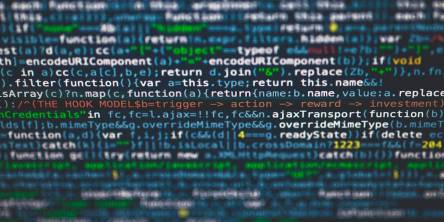How to Choose Lease Accounting Software

Choosing the right lease accounting software ensures your company's lease arrangements are organized, compliant, and aligned with international standards like ASC 842 and IFRS 16.
This guide will help you navigate this crucial decision, focusing on practicality and strategic fit.
Identifying Your Needs
First, understanding your specific requirements is key. Consider the scope and complexity of your lease portfolio. How many leases do you manage? Are they predominantly real estate, equipment, or a mix of both? It will help you identify essential features in the software, such as tools for managing compliance, tracking payments, and generating detailed reports.
In addition, you should ensure that the lease accounting software integrates smoothly with your existing financial systems. This compatibility helps maintain continuity in your financial processes, prevents errors, and supports accurate, real-time reporting.
Key Features to Look For
Compliance with Accounting Standards: When evaluating software options, focus on features that support compliance with standards like ASC 842 and IFRS 16. These mandates require that all lease obligations be reported on balance sheets.
The software should automatically update to reflect the latest regulations and include comprehensive tools for recognizing, measuring, presenting, and disclosing leases.
Easy to Use: The software should also be easy to use. A user-friendly interface and minimal training requirements can significantly reduce onboarding time and enhance productivity.
Scalable: Additionally, as your business grows and takes on more leases or faces changes in lease accounting standards, the software must be able to scale accordingly. The ability to scale ensures that the software continues to serve your needs without frequent replacements or upgrades.
Reporting Capabilities: Strong reporting features are another essential aspect of lease accounting software. It should allow you to easily create customizable reports that meet both internal management and external regulatory requirements. These reports should be simple to generate and provide valuable insights that support strategic decision-making within your company.
Evaluating Vendors
When choosing a lease accounting software provider, it's important to check their reputation first. You can do this by looking for reviews or feedback from other users in similar industries or managing similar leases. It will show you how well the software meets the needs of businesses like yours.
Understanding the kind of customer support the provider offers is also crucial. This includes the training they provide to help you get started, the assistance available during the software implementation phase, and the ongoing technical support after you've started using the software.
Another important factor is the total cost of owning the software. This includes not only the price you pay to buy or subscribe to the software but also any additional costs involved in setting it up, training your team to use it, and maintaining it over time.
You should weigh these costs against the benefits you expect to gain from better lease management, such as improved efficiency or compliance with accounting standards. This helps ensure that the software is a worthwhile investment for your business.
Implementing Lease Accounting Software
Once you've chosen your lease accounting software, the next step is to prepare your team for its implementation. This involves training your staff to use the new software effectively and ensuring everyone on the team understands its features and functionalities.
Additionally, you need to transfer your existing lease data into the new system accurately. This data migration is critical to maintaining continuity and accuracy in your lease accounting processes.
After the software is up and running, it’s important to assess its performance continually. Regularly evaluate its effectiveness in managing your leases and check if it meets your accounting needs.
As your business grows or as software updates become available, be ready to adjust your processes. This might include adopting new features that enhance functionality or tweaking your usage strategies to better suit your operational needs.
Keeping an ongoing dialogue about software performance with your team will also help identify any issues or areas for improvement early on.
The Bottomline
To sum it up, you must thoroughly understand your organizational requirements. Evaluate the software features that align with your company's lease accounting demands and consider both vendor support and the overall cost of the software.
Being strategic during the selection process can help you choose software that adheres to current laws and supports long-term financial stability.
Similar Articles
Amazon Simple Queue Service (SQS), Simple Notification Service (SNS), and EventBridge are just a few of the messaging services that AWS provides to meet various demands when it comes to creating scalable and effective cloud systems.
Wearable technology, embracing devices small enough to be worn unobtrusively, constitutes a market that keeps expanding, and the momentum shows little sign of slowing
For job seekers, grasping the basic functions of Applicant Tracking Systems (ATS) is the first step in overcoming common job search barriers.
In the highly regulated world of pharmaceutical manufacturing, inventory management is far more than just tracking stock levels. It’s a critical component of ensuring product safety, quality, and compliance with current Good Manufacturing Practices (cGMP)
Find a reliable sealing technology with these 7 tips on quality, materials, certifications, and scalability to ensure lasting performance in your industry.
These days, your business depends on strong telecom systems and well-built software to stay ahead. Whether you’re launching a digital product or improving your communication tools, choosing the right team to work with makes a big difference.
Sometimes it seems like walking on a tight-rope when it comes to talking openly in team chats.
Learn how .NET Web API supports scalable architecture. Explore real-world best practices in .NET development for building high-performance, reliable endpoints.
Learn how to spot real fast USB-C charging by checking 4 key specs—output power, protocols, cable compatibility, and smart power distribution.









